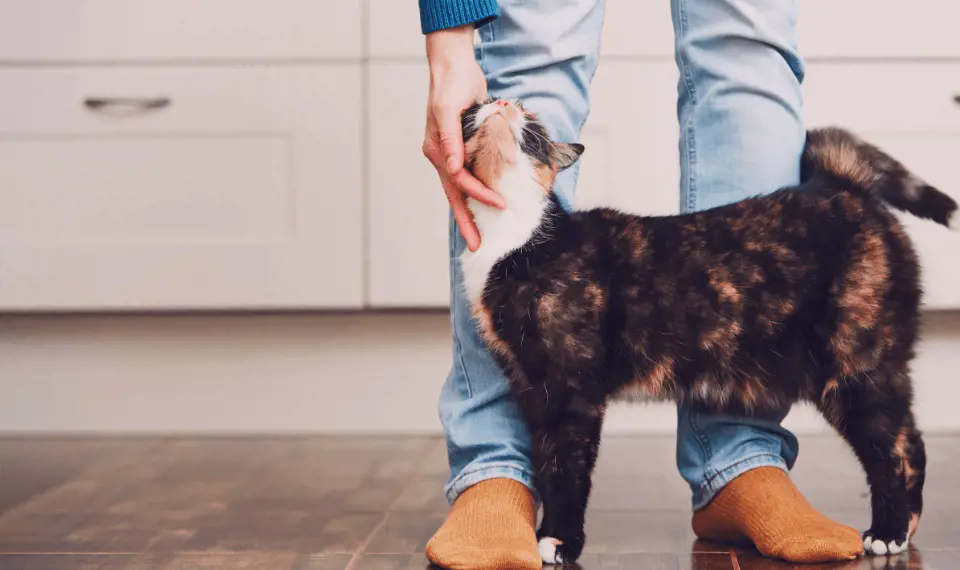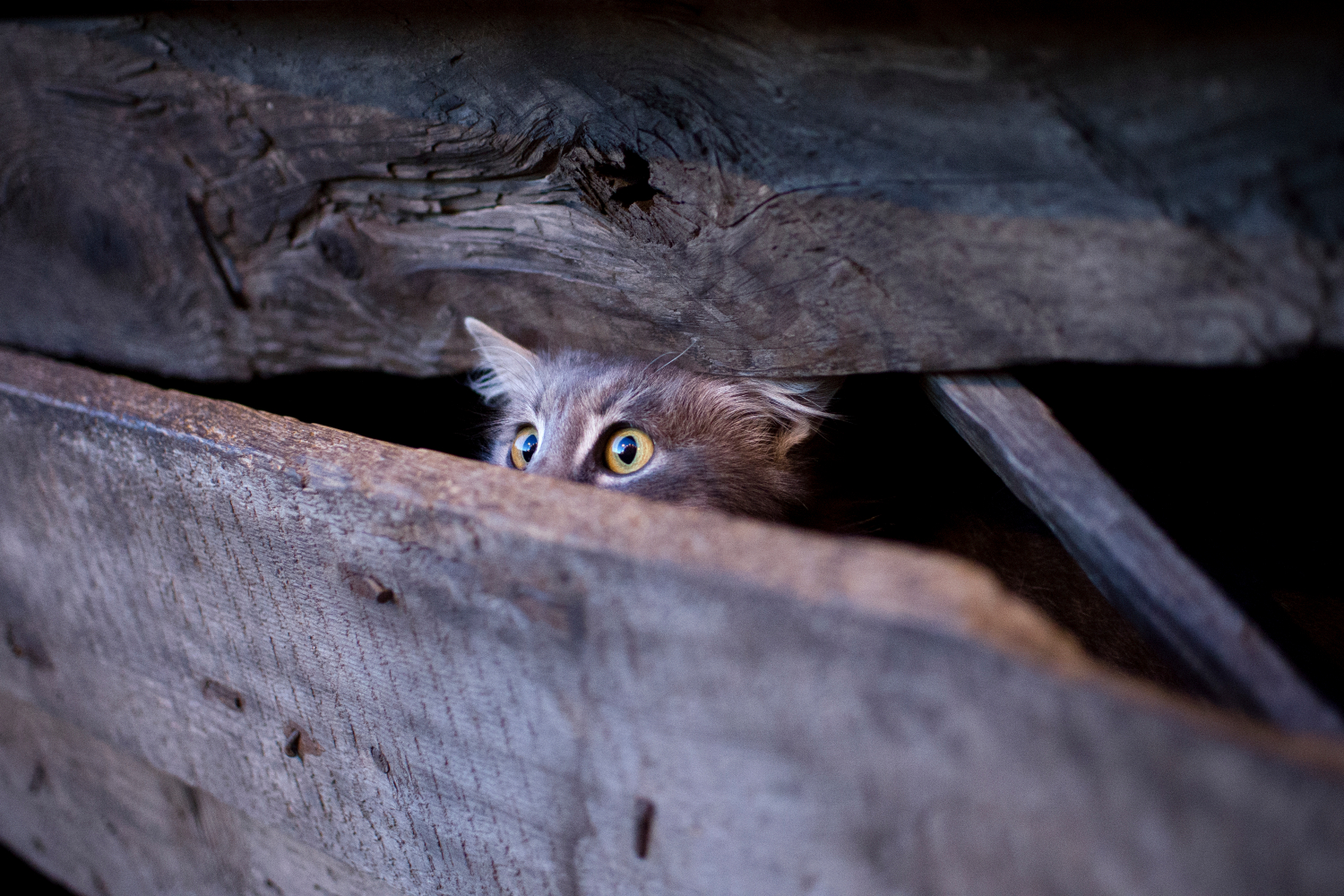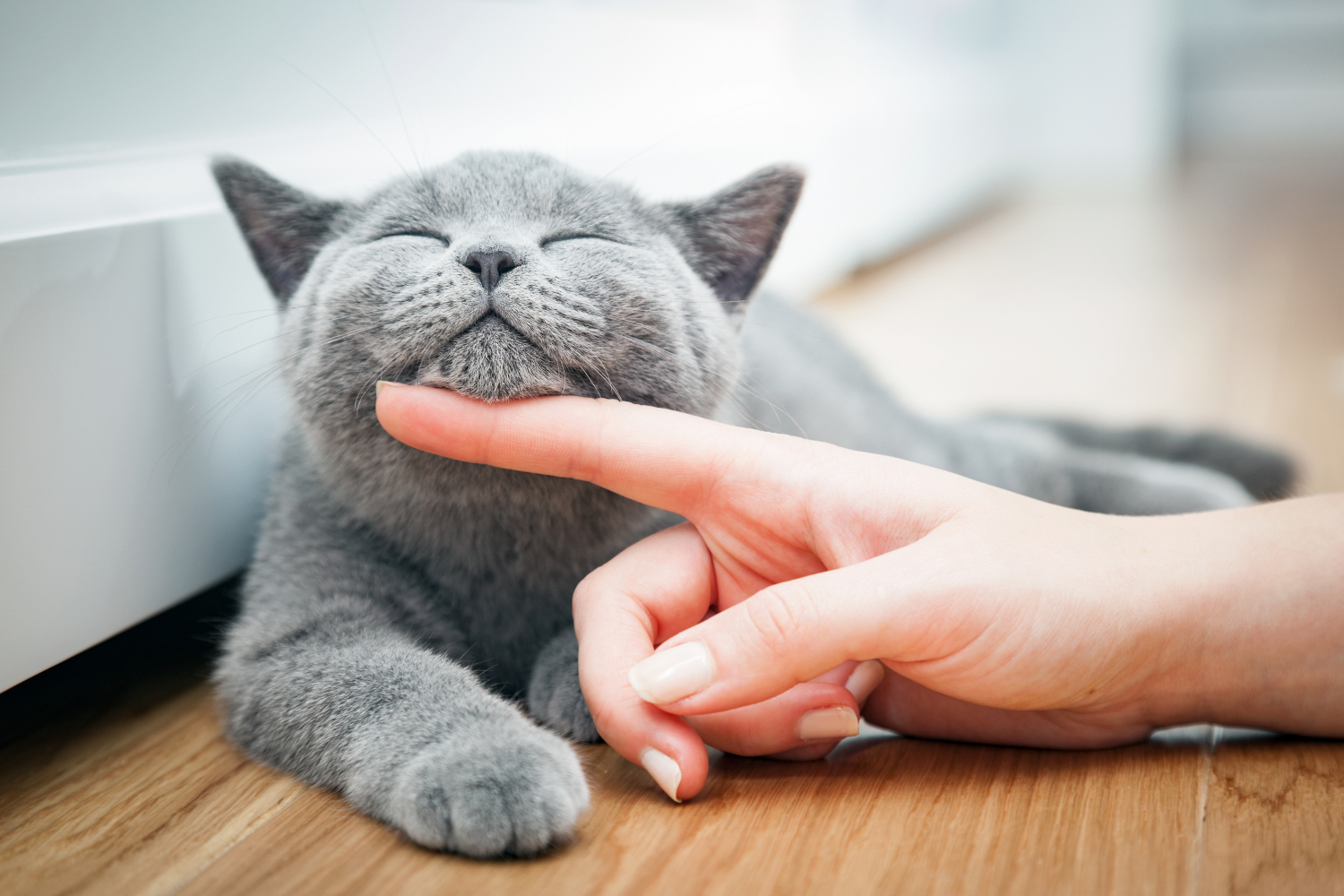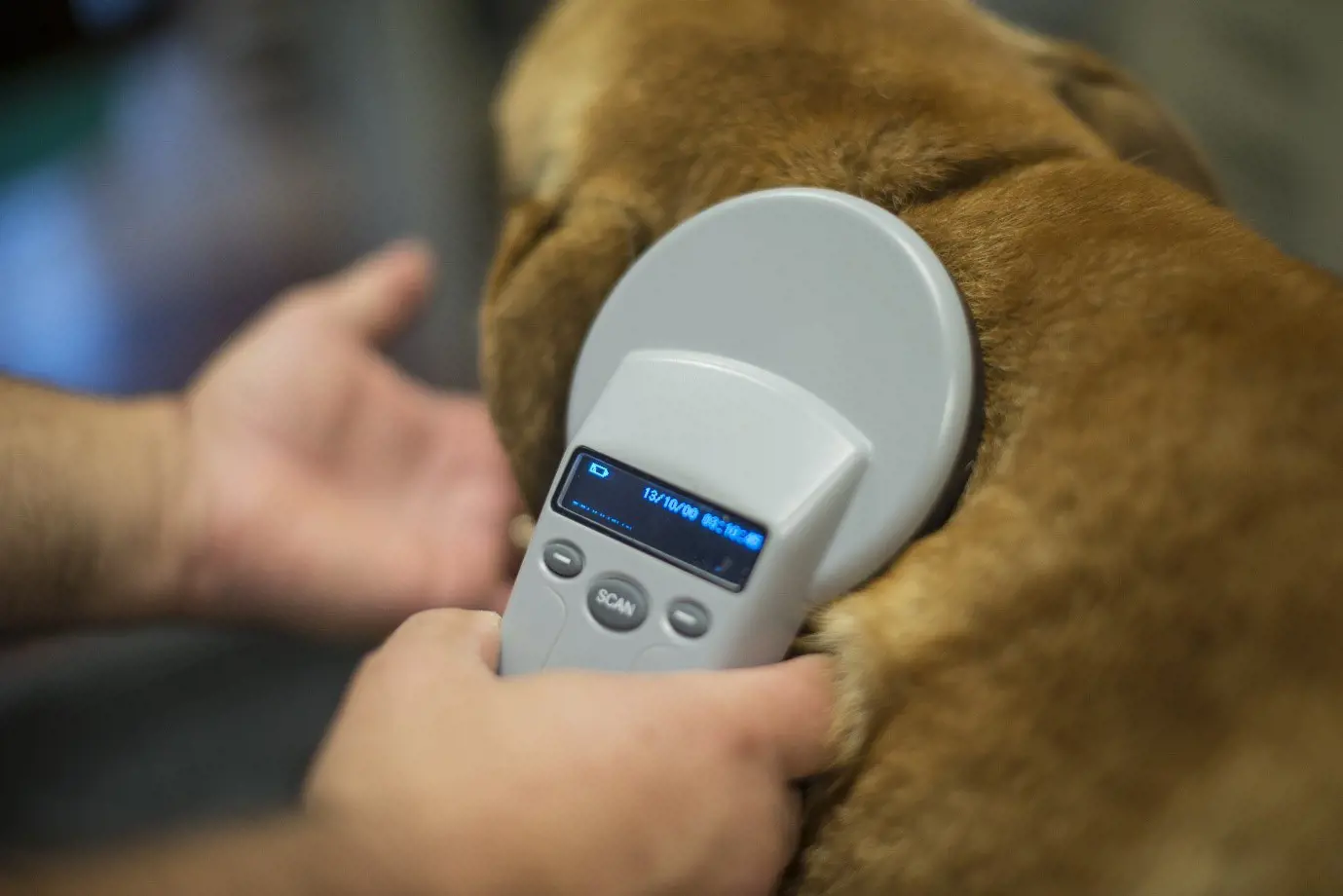Understanding your cat's body language: A guide to interpreting feline behaviours
9th November, 2022

Do you want to know what your curious cat is trying to tell you? Learn all you need to know about your animal’s body language in this Purely Pets guide.
If you’ve ever owned a cat, you’ll know that they often like to keep themselves to themselves – much more so than their canine counterparts.
To those who aren’t accustomed to living with cats, this behaviour can seem quite unfriendly. Cats can be hard to read if you don’t know what to look for. This is where our body language guide comes in handy.
Your moggy displays plenty of tell-tale signs of its current mood that hint to you what it needs. You can sense whether they’re happy and relaxed or in pain and need a visit to the vet.
Do you want to know how your cat is feeling? Learn how to tell when a feline is happy, angry, scared, or frustrated below.
Worried your beloved cat is feeling down or in a lot of pain? With pet insurance cover from Purely Pets, you can get access to 24/7 vet video consultations to check everything is OK.
Our cover also means you won’t have to delay getting emergency care when your cat needs it most. Have you got your pet protected?
What is cat body language?
Just like humans, cats feel a range of emotions, and body language is a non-verbal way of communicating their mood to others.
Observing the context in which your cat is showing certain behaviours is also important. For example, wide eyes and crouched postures can be seen when you have an anxious or angry cat but can also be observed as a normal part of play time.
The more you get to know your pet, the better you’ll be at spotting its emotions. The way your animal acts can tell you a lot about how it’s feeling. Our guide will help you read their body language from their ears right down to their tail and everything in between!
Remember, as felines tend to hide pain, frequent vet check-ups are a must. And if your cat needs treatment or medication, your pet insurance cover may be able to provide the financial help you need.
Why is it important to understand my cat’s body language?
When you or anyone else is interacting with your feisty feline, it’s important to keep an eye on its body language. While some cats love a stroke and to spend hours on your lap, others aren’t so keen.
The last thing you want is for your pet to bite or scratch someone, especially a child. We’ve got some top tips on how to keep your kids safe around cats elsewhere on our blog.
Some felines can tolerate quite a bit of handling, but others find it incredibly stressful, despite not showing this in obvious ways. Learning the subtle signs your pet demonstrates can tell you when they’ve had enough and it’s time to leave them alone – or risk a bite or a swipe!
It’s also important to know when your animal is feeling discomfort and pain or is overly anxious and stressed. The sooner you spot something is wrong, the faster you can get help for your furry family member.
If you don’t yet have coverage to protect your cat, pet insurance cover can help with vet bills in case of accident or illness.
Now, let’s take a closer look at how to notice different emotions in your beloved feline.
Signs of a happy cat
As a caring pet parent, you want your cat to be as happy as possible. You do everything you can to keep things running smoothly between you and your feline friend.
You buy the cosiest bed, provide high quality food, get it the best toys on the market, and protect it with pet insurance cover to help cover the cost of emergency vet care.
So, how do you know all your special treatment is paying off? Luckily, it’s easy to tell when your moggy is happy. Look out for the following body languages in your pet:
- Your cat’s posture is upright and relaxed when sitting, with ears that point up and forward.
- When it lies down, its paws will be neatly tucked under its tummy, or your pet may sprawl with its legs spread outwards – this means it’s extra happy!
- Your cat may spend a lot of time snoozing with its eyes partially or fully closed, often seeming like it’s in a daydream. You can mimic any slow blinking to bond with your pet.
- Its whiskers should look relaxed and their tail still.
- If you stroke your furry feline, expect to hear a gentle purr of contentment and for its eyes to close as it succumbs to full relaxation.
- Your cat’s tongue might slip out of its mouth slightly as the jaw relaxes.
Signs of an anxious cat
However much we want for our animal to be happy 24/7, it’s not always possible. Cats are more sensitive to change than other pets, and it can take them a while to settle again after a disruption.
According to Cats Protection, felines are excellent at hiding signs that they feel stressed, as it helps them avoid becoming an easy target in the wild.
It’s important to know how to tell if your pet feels anxious or stressed. If they spend too long in this state, they risk becoming emotionally and physically unwell. Look for the following ways to spot anxiousness in your feline:
- Its eyes will be wide open and rarely blink. Your pet’s pupils may become dilated, and they may look downwards.
- Your cat’s ears might move around more frantically and droop forwards, perhaps even flattening to their head.
- Expect an anxious cat’s head to lower with whiskers pulled back and small or forward and alert.
- In a heightened state of anxiety, your cat cowers or arches its back as it prepares to run away.
- The tip of your cat’s tail might slowly move from side to side.
- They often withdraw and become more aloof, spending more time hiding in a certain spot or being less keen to eat. There may also be changes in their toileting if they use a litter tray.
What should you do if you think your cat is unwell due to anxiety and stress? Try stroking to help it feel calm and provide plenty of hiding places so it can run away if it needs to.
If the behaviour persists, you’ll need to take your kitty to the vet. If your animal is suffering from an underlying illness, your pet insurance cover may be able to help with the medical bills.
You might want further professional intervention if nothing seems to be working. It’s upsetting to see your cat this anxious, so ask your vet if they can refer you to a qualified behaviourist by the CCAB.
Signs of a focused cat
Despite their cute and fluffy appearance, cats were made to be expert hunters. They have a top drawer set of skills when it comes to stalking and catching prey and can often be seen focusing 100% on a target.
Whether your feline has spotted a mouse in the garden or it can’t keep its eyes off its favourite toy indoors, there’s some specific body language you may notice that signals it’s getting ready to pounce.
- Your pet’s eyes will be open with narrow pupils focusing on the target.
- Every part of your cat seems to be leaning forward. You’ll see ears and whiskers pricking forward as well as its whole body angling towards the focal point.
- As your feline stalks its prey, its body lowers to the ground with its hind legs coiled underneath.
- A focused cat’s tail will stretch out low behind them. It may slowly move from side to side or twitch as they prepare to jump.
- If your pet’s focus is on you because it wants some attention or is hungry, it might hold its tail high in the air and rub its body against you.
Signs of a scared cat

While spotting an anxious feline can be difficult, it’s much easier to know when they feel frightened. A scared cat may hide from even its favourite family member, and no stroke or treat can coax them out.
If you sense your pet is afraid of something, don’t make any sudden movements and try your best to comfort it if it hasn’t run for cover.
Try to remove the cause of these feelings, if possible, and let it calm down.
Your cat will show these signs if it’s scared:
- If there’s somewhere to hide, your pet may run there; if not, it might freeze in a standing or crouching position.
- Its eyes will open very wide with dilated pupils and its whiskers will flatten.
- Your cat’s ears will flatten against the side of its head.
- If there’s a threat close to your pet, it may hiss, growl, and even strike out with its claws.
- Its tail will either stick underneath its body or be moving swiftly from side to side.
Signs of a frustrated cat
Many things can make your cat frustrated, from not being able to reach a specific toy to a long-term need for stimulation. If your pet is indoors most of the time and can’t perform its natural instinct to hunt, for example, it can become very frustrated.
The symptoms of this emotion are often misinterpreted, so watch closely for specific behaviours in your pet.
- If your cat is frustrated because it wants a certain item, it will focus all its attention on it and do everything it can to get it.
- Your cat’s eyes will be wide open with dilated pupils. Ears and whiskers will both point forward.
- If they can’t get what they want or are longing for stimulation, they may start to pace impatiently in the same spot. They may start to exhibit destructive behaviours like chewing or scratching things they shouldn’t. Or sudden aggression towards you.
- Your pet can’t keep up this level of frustration forever. They will eventually give up or even enter into a long-term depressive state, depending on the cause of their feelings.
If your cat has become depressed, you’ll start to notice them going off their food, refusing to interact with others, and getting very lethargic.
These symptoms are worrying for any feline parent and could be a sign of various health issues. Whatever the cause of these symptoms, you need to take your cat to the vet.
If you have an pet insurance cover policy with Purely Pets, you can use the 24-hour vet video consultation service. This may be easier than taking your cat out of the house and causing it extra stress.
Signs of an angry cat
An angry cat warrants extra special caution, and you’ll need to tread carefully to avoid provoking them further. Don’t make any sudden movements and avoid touching them.
Even if you’re trying to help, their current mood might cause them to lash out and attack you.
Slowly retreat and remove any threats if possible. Give them the time and space they need to calm down before you approach them.
How do you know if your pet is showing signs of anger and aggression?
- Your cat’s body will become rigid, and their tail will either be held out and stiff or curl around its body.
- Its character will suddenly seem very different to normal, and it may go silent or start to growl, hiss, and spit.
- Expect your pet’s fur to stand on end along their back and their tail and for its front legs to stand tall and stiff or crouch in a threatening way.
- Ears will flatten back against its head and look tense while whiskers will turn stiff and away from the face.
- Its eyes will focus, usually with narrow pupils, but some cats also develop wide eyes that don’t blink.
If your cat seems angry often and starts being violent and fighting other felines or even you, it could be a sign of something more serious, like being in pain.
Take them to the vet or speak with your animal behaviourist to see why they have become so negative and if cat training can make a difference.
Alternatively, if you have pet insurance cover with Purely Pets, use the 24/7 vet video service for at the first sign of trouble.
Signs of a relieved cat
If your furry feline was scared, angry, or frustrated and you helped reassure it, you may start to notice signs of relief. As a caring cat parent, seeing your pet feel normal again is also comforting to you, so it's good to know what to look out for.
- As your cat breathes a sigh of relief, you may notice it stretches its entire body to release any pent up tension.
- If your pet displayed a tense body, eyes, and ears, you should now see them all visibly relaxing.
- Stiff whiskers will return to their calm, away from the face position and your cat’s head will lower.
- If they feel particularly calm, they will slow blink and half-close their eyes, Cat behaviour comparison chart
If you’ve noticed a few odd signs in your cat lately and are wondering what its body language is trying to tell you, use our behaviour comparison chart to determine how it's feeling.
| Eyes | Ears | Tail | Whiskers | Body | |
| Happy | Partially or fully closed and slow blinking | Pointing up and forward | Still and relaxed | Relaxed and away from face | Sitting upright and relaxed or lying with paws under tummy or stretched out |
| Focused | Open with narrow pupils | Pricking forward | Stretched out low behind and twitching | Facing forward | Learning towards the focus of attention or lowering to the ground with legs coiled underneath |
| Anxious | Wide open, rarely blinking, and dilated pupils | Move around quickly, droop forward, and head to head | Tip moving slowly from side to side | Pulled back and small or forward and alert | Cowering or arching back |
| Scared | Open wide with dilated pupils | Flattened against the side of the head | Stuck underneath the body or moving vigorously from side to side | Flattened to face | Frozen standing or crouching or running for cover |
| Frustrated | Open wide with dilated pupils | Pricking forward | Moving from side to side | Facing forward | Pacing in the same spot |
| Angry | Wide eyes, narrow pupils, no blinking | Tense and flattened back | Held out stiff or curled around and under body | Stiff and away from face | Rigid with fur standing on end |
| Relieved | Half-closed | Pointing up and forward | Still and relaxed | Relaxed and away from face | Stretching and licking paws with a lowered head |
How can I make my cat happier?
If your cat seems to be frustrated, scared or anxious more often than not, you may wonder what you can do to make them happier. Every feline owner wants their animal to feel loved, happy, and like a part of the family, but some cats make it more difficult than others.
Here are a few ways to boost your pet’s happiness and give it the ‘purrrfect’ life it deserves.
Monitor their health
A healthy cat is a happy cat. Providing the right diet, plenty of exercise opportunities, and lots of attention are essential to its well-being, but they can still sometimes fall ill or have an accident.
That’s why getting pet insurance cover is vital to protect your cat in case of an emergency and to avoid facing a medical bill you can’t afford. Consider a pet health plan for non-emergency treatments to stay on top of your cat’s vaccinations and health checks.
Make playtime fun
All cats have a natural urge to hunt and physically catch toys to complete the hunt cycle, so you need to provide the space and equipment for them to do so safely at home. Buy age-appropriate toys for kittens and avoid using your hands or feet during play for them to grab and nibble on – as they grow, this will get a lot more painful! Gently bring play time to a close and offer a small amount of their daily food allowance to prevent frustration.
Consider catnip
This plant from the mint family sends felines into a state of euphoria and can be a great way to help them overcome stressful situations. Alternatively, if you have a lazy cat who finds it hard to get off the sofa and play, a bit of catnip might give them the boost they need to get moving.
Neuter your pet
Most vets will neuter cats from as young as four months old. This isn’t included in pet insurance cover plans but can do wonders for their overall well-being.
According to Battersea, neutering avoids unwanted pregnancies and litters you can’t care for, as well as having a calming effect on your feline. It’s also beneficial to their health as it can prevent certain cancers from developing.
Care when you’re away
When people bring a cat into their home, they often think they’ll be fine being left alone while they go on holiday, but this isn’t the case. When you suddenly leave and show no sign of returning, your puss can quickly become anxious.
If you have to go away for a few days and want to avoid the stress of going to a cattery, ask a close friend or family member to check in on them often – preferably someone your animal is familiar with.
Keep your kitty protected with the right insurance

Cats might seem a little grumpy to us humans, but they’re usually very happy and calm creatures – at least when everything is the way they want it.
Sometimes, something happens to make them feel threatened, and they display behaviours that we don’t understand. Learning to read your pet’s body language is essential to understanding its emotions.
If they’re trying to tell you they feel depressed or are in a lot of pain, you need to get them to the vet. Protect your beloved cat with an to help cover the costs of emergency treatment.
Why choose Purely Pets to cover your cat?
- Choose from 15 levels of lifetime cover to suit your budget and needs
- No upper age joining limit, so cats young and old can get protection
- Get lifetime cover for up to per year
- Access 24/7 vet video consultations
Do you want award-winning coverage for your feisty feline? Contact the Purely Pets team today to get pet insurance cover for your cat.
Helpful Pages
Recent Posts
Pet Insurance Quote
- 98% claims paid *
- Claims paid directly to vets
- 24/7 vet video consultations
- Interest free monthly payments




